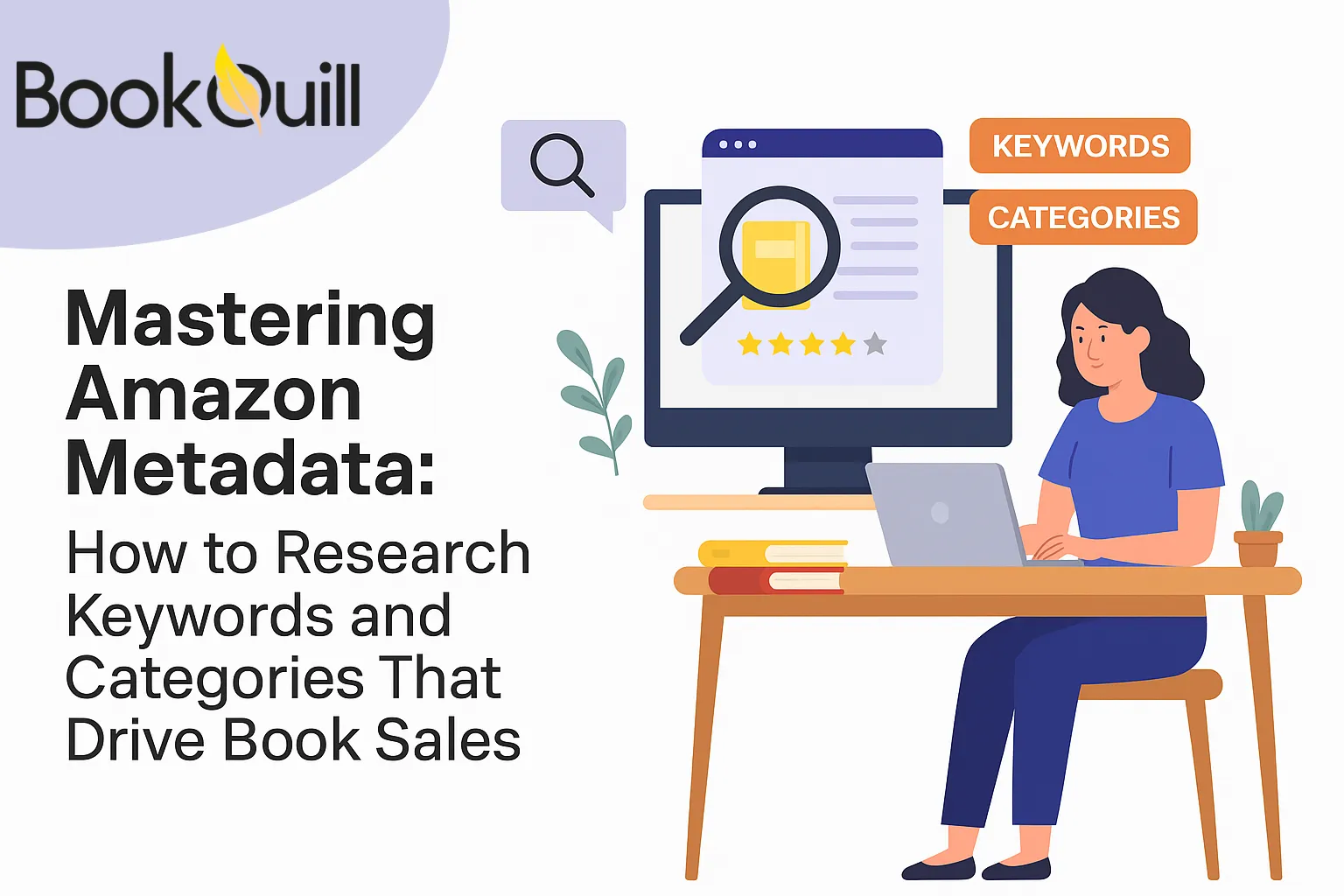Table of Contents
Explore Blogs
Trending on Ebook
How to Submit a Book Proposal in Three Easy Steps

If you have written a book, you must have dreamed of seeing it on store shelves, and for that, what you need to do is figure out how to submit a book proposal. Submitting a proposal can feel a little overwhelming. Sometimes, you have to revise it multiple times or tailor it to fit each publisher’s guidelines, but don’t sweat it.
We have broken the process down into three simple steps, so by the time you finish reading this, you will be ready to send your proposal to publishers.
Key Takeaways
- Every Publisher Has Different Requirement: Each publisher has unique submission guidelines, and aligning your proposal with them increases your chances of acceptance.
- Making a Good Proposal Package: What is the recipe for writing a good, strong proposal? It includes a captivating overview, a clear definition of your target audience, and a well-thought-out marketing plan.
- Submit and Follow Up Professionally: After submitting, track your submissions and follow up if you don’t hear back within the specified timeframe.
- A Tip: Keep a spreadsheet to track submission dates, follow-up times, and the status of each proposal. This will help you avoid missed opportunities.
- Be Persistent and Patient: Remember that rejections are part of our life. Once you’ve got a rejection, try to adjust your proposal based on feedback, and continue submitting to multiple publishers.
1. Research the Publisher’s Requirements
Every publisher is different. What works for one may not work for another. You have to make sure your proposal aligns perfectly with the publisher’s guidelines.
Take time to read the submission requirements. For example, Persea Books tends to focus on literary fiction and poetry, so if your novel is about romance, they’re probably not the one to approach. On the other hand, Kensington Books might be right up your alley if your book is a mystery or thriller.
You will also notice that Skyhorse Publishing has its own way—this publisher likes nonfiction on a variety of topics. If you’ve got a memoir or self-help book, they could be a great fit. Then there are Sterling Publishing submissions, which tend to focus more on lifestyle, education, and how-to books.
Research helps you pitch smarter. If you send a proposal to the wrong publisher, it’ll be rejected before it’s even read. Submitting to the right place increases your chances of acceptance.
2. Put Together a Winning Proposal Package
It’s time to build a solid proposal. Think of this as your book’s “sales pitch.” You’re convincing the publisher that your book will sell, so it’s got to be well-prepared and professional. Here’s what you need to include:
-
A Killer Overview or Synopsis
The overview is your hook—it grabs the publisher’s attention and makes them want to read more. Keep it brief but engaging, with a focus on the main story of your book. What makes your story or topic unique? Highlight that right away.
If you’re trying for Kensington book submissions or Skyhorse Publishing, they will want to see a pitch that stands out in their competitive genres. Whether it’s a thrilling plot twist or a unique angle on a nonfiction topic, make it memorable from the start.
-
Define Your Audience
Publishers need to know that there’s a clear market for your book. Explain who your audience is and why your book will appeal to them. Are you writing a young adult fantasy that will resonate with teenagers or a parenting guide targeting new moms?
Being specific is essential; simply stating, “This book is for everyone,” is not sufficient. Mentioning niche markets or comparing your audience to that of similar bestsellers shows publishers that you’ve done your homework. For example, Persea Books submissions may require a more literary-focused audience, while Kensington Books leans toward genre-fiction fans.
-
Add a Marketing Plan
Even if you don’t have a huge platform, show that you’re ready to promote your book. Mention any relevant social media followers, email newsletters, or connections to book clubs or podcasts.
If you’ve scheduled any launch events or speaking engagements, include those too. The more detailed and realistic your plan, the better your chances of convincing a publisher that your book will succeed in the market.
-
Does Formatting Matters?
Yes, some publishers have strict guidelines about how they want the proposal to look. For instance, Skyhorse Publishing submissions often ask for proposals to be attached as PDFs, while Kensington Books submissions might prefer the text to be pasted directly into the email. Meanwhile, Persea Books submissions might only want a sample chapter with your pitch.
Make sure everything is polished and professional. Double-check your grammar, and avoid sounding too casual. It’s okay to be passionate, but your proposal needs to be clear and businesslike.
3. Submit Your Proposal and Follow Up
Before you hit the send button, make sure you’re submitting your proposal through the right channels. Some publishers prefer email, while others have submission portals on their websites. For example, Sterling Publishing submissions might require you to fill out a form online, while Kensington Books submissions may ask you to email your entire book proposal package.
Once you’ve submitted, don’t just sit around and hope for the best. Following up professionally is part of the process. Publishers get hundreds of proposals, and sometimes, things slip through the cracks. If you don’t hear back within the timeframe mentioned in their guidelines (usually 6 to 12 weeks), it’s okay to send a polite follow-up email. Something simple like:
“Hi (Publisher’s Name),
I wanted to follow up on my submission from (). I hope everything is going well on your end, and I look forward to hearing from you. Please let me know if you need anything else from me. Thank you for your time!”
This shows you’re professional and serious about your work without coming across as impatient.
How to Track Your Submissions?
Submitting multiple book proposals can get messy fast if you’re not organized. Keeping track of who you’ve contacted when you submitted helps ensure you stay on top of things. Here’s how to do it:
-
Create a Simple Spreadsheet
The easiest way to track submissions is by using a spreadsheet. Include columns for:
- Publisher name (e.g., Persea Books submissions, Skyhorse Publishing submissions)
- Date of submission
- Type of submission (full proposal, query letter, sample chapters)
- Follow-up date (in case you need to nudge them)
- Status (submitted, in review, rejected, accepted)
This gives you a bird ’s-eye view of your submission process, helping you avoid submitting book proposals to the same place twice or missing key deadlines.
-
Stay Organized with Reminders
Use calendar tools like Google Calendar to set reminders for follow-up emails. If a publisher states they’ll respond within 8-12 weeks, mark the follow-up date to ensure you reach out on time.
-
Note Any Publisher Preferences
Each publisher has its submission guidelines—Sterling Publishing may require online forms, while Kensington Books might request email attachments. Keeping these preferences recorded ensures you don’t make mistakes.
-
Update Regularly
Make it a habit to update your tracker whenever you send, follow up, or receive responses. This way, you can stay ahead and avoid missing any critical opportunity.
Bonus Tips for a Successful Submission
To improve your chances of success when submitting a book proposal, follow these additional tips:
-
Include Comparable Titles
Publishers like to see how your book fits into the current market. In your book proposal, mention comparable titles—books similar to yours in genre, theme, or style. This helps the publisher understand your book’s potential and target audience. Just make sure the comparisons are appropriate—don’t compare a niche poetry collection to a mass-market thriller!
-
Submit to Multiple Publishers
While it’s tempting to wait for a response from one publisher, many publishers allow simultaneous submissions. Be upfront about it in your cover letter. This improves your chances of getting picked up. Just remember to withdraw your submission if you receive an offer from another publisher.
-
Build a Strong Author Bio
Use your bio to show the publisher why you’re the right person to write this book. Mention any previous publications, awards, or relevant experiences. If you have expertise in the subject matter, highlight that.
For example, if your book proposal involves cooking or lifestyle topics, and you’re submitting to Sterling Publishing, emphasizing your background in these fields makes your pitch stronger.
-
Start with a Great Query Letter
Your query letter is the first thing the publisher reads, so it needs to grab attention. Keep it short, professional, and engaging. Introduce yourself, summarize your book, and explain why you think it fits the publisher’s catalog. A strong query letter can make the difference between a quick rejection and a request for your full proposal.
-
Be Patient and Professional
Publishing is a slow-moving industry, and waiting can be frustrating. While follow-ups are okay, keep them polite and professional. If the publisher gave a response window within 6-12 weeks, wait until that period has passed before checking in.
When you follow up, keep it brief and courteous. Remember that persistence without pressure is important.
-
Know When to Move On
If you’ve submitted it to several publishers but haven’t received any positive responses, it may be time to revisit your proposal. Evaluate the feedback you’ve received (if any) and consider adjusting your pitch, synopsis, or target publishers.
Sometimes, even a great book needs a little tweaking to align better with market trends or publisher expectations. Don’t give up—the right publisher is out there; it just takes time to find them.
You Got This!
Submitting a book proposal isn’t difficult. Once you know how to submit a book proposal, you’ll be on your way to getting your book into the hands of the right publisher. Start with research, polish your proposal, and send it out.
Whether you’re targeting Persea Books for literary fiction, Skyhorse Publishing for nonfiction, or Kensington Books for a thriller, presenting your proposal correctly can significantly improve the odds of acceptance.
Avoid the mistake of sending your proposal to just one publisher. Submit to multiple publishers, and if you receive rejections, review their feedback, improve your proposal, and try again. You have to be patient throughout the process because persistence will pay off in the end.
FAQs
Can I submit my book proposal to multiple publishers?
Yes, many publishers accept simultaneous submissions. However, be transparent about it in your cover letter, and notify other publishers if your book is accepted elsewhere.
What if I don’t have a large platform for my marketing plan?
Even if you don’t have many followers, let people see that you’re actively promoting your book through social media, events, and networking.
What formatting guidelines should I follow for my proposal?
Every publisher demands different formatting. Some may request submissions in specific formats (e.g., PDF or Word document), while others prefer email submissions with the text pasted directly. Always review each publisher’s guidelines carefully to ensure compliance and maintain a professional appearance in your document.
Is it okay to withdraw a proposal after submitting it?
If you get an offer from another publisher or want to go a different way, you can pull back your submission. It’s nice to let the publishers you contacted know about your decision quickly.




